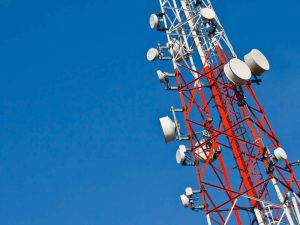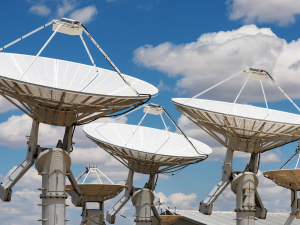Understanding TCP/IP and Mastering Wireshark – Network Analysis and Troubleshooting

Course Overview
This course seeks to provide a high-level overview of the role of TCP/IP in telecommunications and its impact on Internet and IP transit traffic.
Participants will gain a comprehensive understanding of TCP/IP networking principles and the practical skills to perform network analysis and troubleshooting using Wireshark, a powerful packet analysis tool. They will learn how to interpret and diagnose various network issues and effectively resolve them.
Target Audience
This course is designed for CXOs and senior management executives who are not IT specialists or engineers but require a good understanding of IP networks and the Internet for network planning or business negotiation.
Duration & Training Format
- Classroom: 3 days
- LIVE Virtual*: 21 hours
- A minimum of 6 or more participants are required for a company-based LIVE Virtual course to commence
- LIVE Virtual courses can be conducted for 5 hours or 7 hours daily. Please note that the number of training days will be extended if you opt for 5 hours daily.
Upcoming Course Dates
16 – 18 Oct 2024 (Mon – Wed), GMT +08:00
If you are keen on attending the above scheduled course, please register your interest via our course enquiry form.
Course Objectives
At the end of this course, participants will be able to:
- Understand the fundamentals of networking
- Explain the role of ethernet switches in local area networks and how they facilitate communication between devices
- Describe the functions of a router and its role in directing traffic between different networks
- Comprehend IP addressing, including IPv4 and IPv6, and understand how IP addresses are used for network communication
- Utilize Wireshark as a packet analyzer tool to capture, inspect, and analyze network packets for troubleshooting purposes
- Analyze Layer 2 frames using Wireshark, understanding how data is encapsulated and transmitted at the data link layer
- Analyze Layer 3 packets using Wireshark, including the examination of IP headers and understanding routing decisions
- Analyze Layer 4 segments using Wireshark, focusing on transport layer protocols like TCP and UDP, and identifying issues related to port numbers, flow control, and error detection
- Analyze Layer 7 protocols using Wireshark, gaining insights into application layer communication and identifying potential problems with specific applications or protocols
Course Outline
- Networking Fundamentals
- What is a Network?
- What is Networking?
- Why Networking?
- Internet – The Network of Networks
- Circuit Switching (CS)
- Packet Switching (PS)
- Comparison of CS and PS
- Ethernet Switches and their Role in Local Area Networks
- Switch Advantage over Hub
- Switch vs Bridge
- Learning Behavior
- Redundancy and Looping
- Looping Avoidance via STP
- Router and its Role
- Router Traffic Handling
- Router Intelligence
- Router Tables
- Router Input and Output Interfaces
- SDH and Carrier Ethernet Interfaces
- Linking with High-End Traffic Medium (eg. Submarine)
- IP Network
- Router’s Role in IP Networks and WAN
- IP Addresses V4 and V6
- IP Packet
- Header Field
- IP Routing Protocol
- IP Addressing
- IP Address Format
- Classes A, B, C, D, E
- Subnet Mask
- Classful vs Classless
- Private vs Public IP Addresses
- DHCP
- Subnetting
- Wireshark: Packet Analyzer
- Downloading and Installing
- Basic Interface
- Overview of TCP/IP and OSE Models
- Analysis of Layer 1 Data
- Analysis of Layer 2 Frame
- Analysis of Layer 3 Packet
- Analysis of Layer 4 Segment
- Analysis of Layer 7 Protocols
- Troubleshooting with Wireshark
- Wireshark: Analysis of Layer 2 Frame
- Frame Format
- IEEE 802.1Q Standard Formats
- VLANs and Tagging
- Provider Bridging (PB)
- Provider Backbone Bridging (PBB)
- MPLS Flavors: VPWS, VPLS, MPLS-TP
- Spanning Tree Protocol
- Wireshark: Analysis of Layer 3 Packet
- Packet Format
- ARP Behavior
- DHCP Behavior
- Ping and Tracerroute (ICMP)
- Routing Protocols
- Wireshark: Analysis of Layer 4 Segment
- TCP and UDP Headers
- TCP Flags: SYN, ACK, PSH, RST, FIN, etc.
- TCP and UDP Behavior
- TCP Handshake Mechanism
- TCP Windero Size and Scaling
- Troubleshooting with TCP Headers
- TCP Duplicates and Other Errors
- TLS (Transport Layer Security)
- QUIC Protocol
- TCP Stream Graphs
- Wireshark: Analysis of Layer 7 Protocols
- DHCP, FTP, HTTP, DNS, and Other Protocols
- DHCP Detailed Working: Discover, Offer, Request
- HTTP Detailed Working
- FTP Commands and Control Connection
- DNS Exercise: Header, Question, Records, Answer Records
- Exercises and Examples
Note: A Certificate of Completion will only be issued upon achieving at least 75% attendance for the course.
Pre-requisites
NIL
Be the first to add a review.
Related Courses




